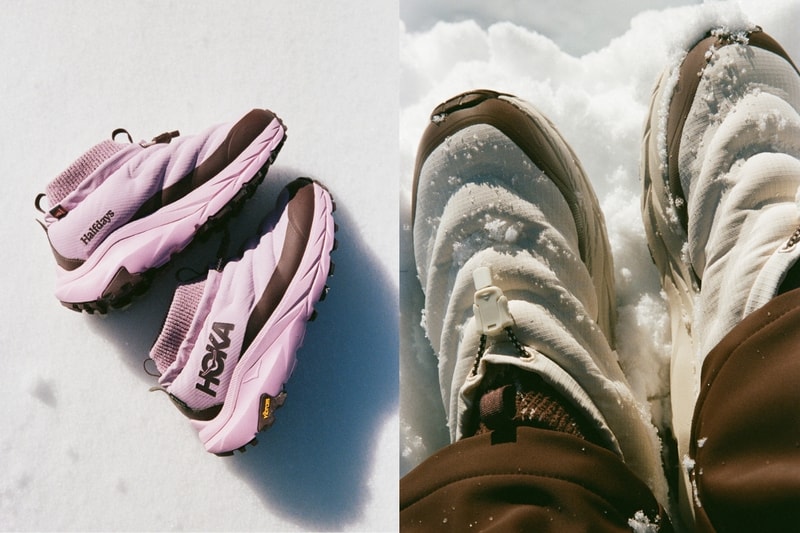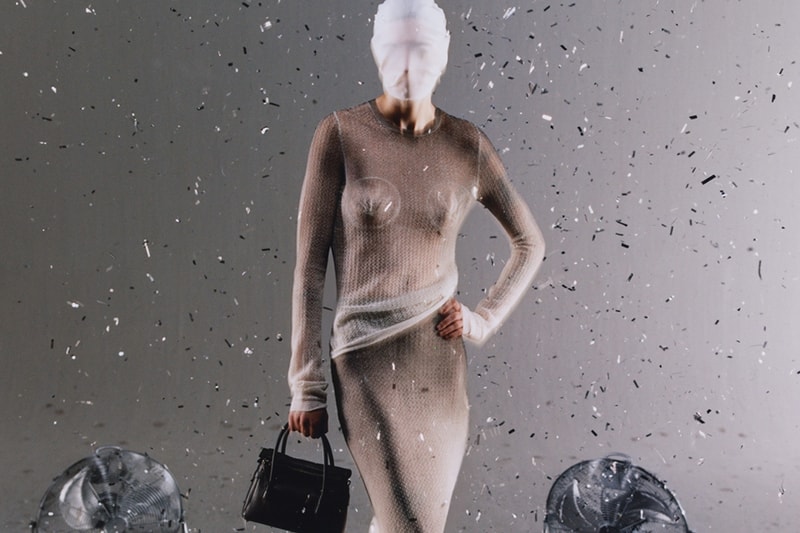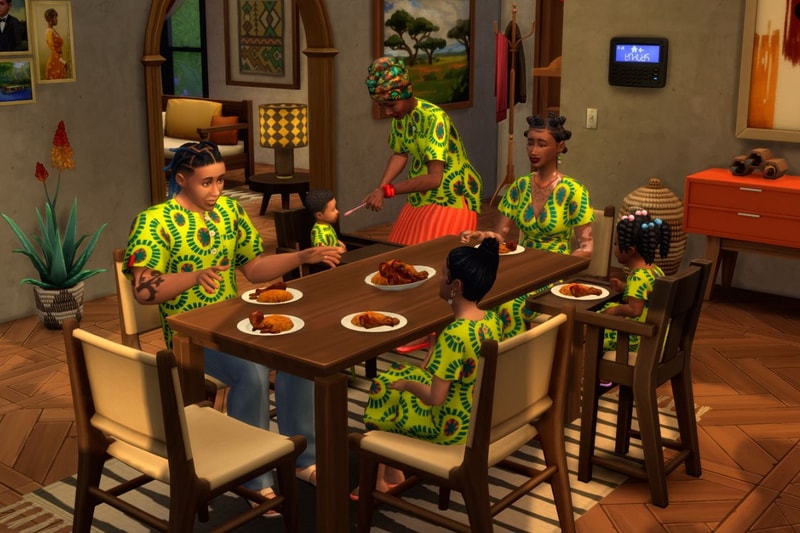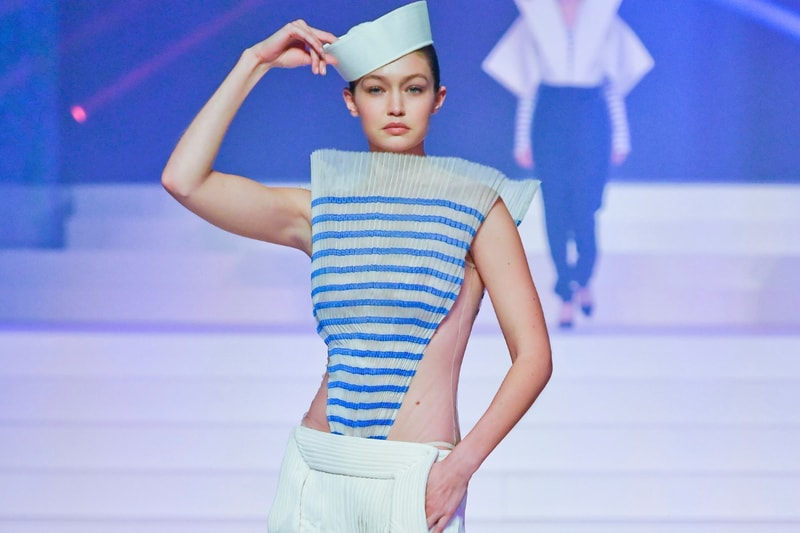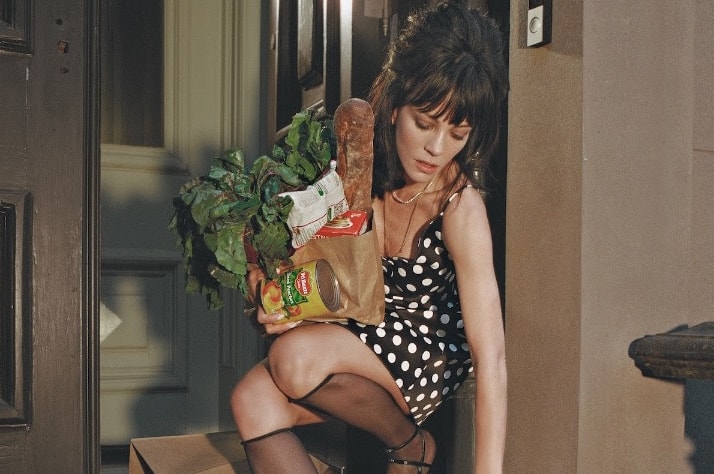Spiritual Codes and Digital Craft: Is the Future of Fashion Written in Lore?
info@hypebae.com (Hypebae) Mon, 19 May 2025 Hypebae
Is fashion the new ritual? Is lore what comes after trend? Can a garment hold a spell? These are all questions that arrived in our minds after leaving the Fall/Winter 2025 fashion circuit, where amidst the chaos and conformity, something more primal was crawling to the surface. Lore – fashion history's moody counterpart that finds distinction by merging function with narrative.
In a world where microtrends arrive and disperse in minutes, lore offers an alternative design methodology – one that pulls from ancestral, spiritual and speculative references—not seeking to repeat history, but to reshape it.
Across our conversations with emerging designers who are tapping into lore, a shared impulse became clear: to blur boundaries between past and future, analog and digital, mysticism and material. Berlin-based designer Mortiz Iden does so by investigating digital journeys of queer intimacy, cyborg culture and religious symbolism. Yaku Stapleton and Svea Beckedorf each utilize rituals of performance to communicate their collection concepts. Elsewhere, London-based designers Marie Lueder and Charlie Constantinou channel historic references and preserved artifacts into performance wear mediums, to honor our collective connection to mother nature. Although each designer has their distinct methods of practice, one thing connects them – they all see lore as living and collaborative, placing tradition over trend.
Continue reading for the full conversations, where we explore the shape-shifting language of lore in fashion, the designers' recurring symbols and mystical inspirations and how technology enables them to conjure the past into the future.

What does lore mean to you?
Svea Beckedorf: For us, lore is a living archive—a form of shared memory passed down through stories, symbols, gestures and clothing. It connects past and present, myth and reality. We love working in that in-between space where meaning isn't fixed, but constantly reshaped.
Yaku Stapleton: Lore is the ingredients that shape our stories. This includes how things look, feel, smell, taste and who occupies and interacts within those spaces. It's also a form of history—something remembered and passed on.
Mortiz Iden: It's like a language that gets translated again and again. As I keep telling different stories through my collections—one after another—it starts to feel like a book that eventually forms a larger narrative. Over time, that becomes the lore.
Marie Lueder: I'm trying to develop my own lore through working together in a group and inviting different personalities and artists into a creative idea. From there, we develop ideas around our backgrounds and curiosities, something that is our own and that is informed by the past, present and future.

Do your own spiritual or philosophical beliefs influence your design process? If so, how?
Svea Beckedorf: Absolutely. We use methods like blind drawings and let meaning emerge through doing. Only after that first moment of creative chaos do we dive into research. Our work isn't about illustrating beliefs, but embodying them—by trusting the process, staying flexible and letting things unfold naturally.
Yaku Stapleton: I don't have any rigid beliefs, but I do have principles that guide how we design. We take a collaborative approach—we're here to grow together. That's a core belief that shapes how we work. I enjoy collage—not necessarily the traditional form—but the idea of combining different elements. The world itself is a collage—a combination of people, places and influences. We try to reflect and continue that in the studio.
Mortiz Iden: I've always been fascinated by blurring the lines between what's human and what's not. In almost every collection I've done, that question appears: When do we stop being human? What defines us? Can an android be considered human if it expresses emotion? Is AI human if it appears to feel? These ideas—blurring boundaries, embracing ambiguity—are central to my work.
What initially drew you to explore themes such as mysticism and futurism as a central theme in your design work?
Svea Beckedorf: We're fascinated by things that hold mystery—ancient places, forgotten rituals or objects we don't fully understand anymore. Our debut show "MØLYBDØMANCY" was inspired by the ritual of lead pouring, where meaning emerges from chance and interpretation. Our circular set design referenced stone circles—spaces of gathering and resonance— and we treated dressing itself as an act of ritual.
Marie Lueder: I was really into history as a child and would always read novels based in the past. My mom is an artist and my grandma was into natural remedies. Ritual, from street parades to big fires for Easter, became a part of my identity. Also, I went to a medieval larping camp where [we would] play across different centuries from 300 B.C. to 15th century and learn to live in that time. It was very geeky.
Yaku Stapleton: Afrofuturism [helped me] understand why I had always been interested in certain things—why my brothers and I were drawn to specific games or imagined worlds, often ones rooted in the unreal. The idea that stands out most is the opportunity to redefine your reality through what you engage with—and the positive impact that can have on your everyday life. At times, it's tempting to move away from always naming Afrofuturism explicitly. But I believe it's important to keep referencing it. It's a way of honoring the lineage of thought.
How do you approach researching lore to inform your designs?
Charlie Constantinou: I tend to look at books or exhibitions which have a lot of historical artefacts, whether it be textiles, found objects, tools or ceramics.These persevered artefacts which have withstood time are the closest we can get to understanding the ancient cultures and civilizations that came before us.
Marie Lueder: Outside of family members, I'm often inspired by artists and writers who work in fields of lore. I like to read and go to exhibitions like "Medieval Women: In Their Own Words" at the British Library. I have a friend who is an energy healer and I learn a lot from her about mysticism and witching – traditions that are predominantly passed down from women to women.
Yaku Stapleton: Internally, we start with long conversations—almost like roundtable discussions—where the team and I work through a list of questions to better understand who [our] characters might be in real life. Some of the questions can feel unusual at first, things you wouldn't typically ask, such as whether a character gets along with their grandfather, and more importantly, why.
We've noticed a rise in brands focusing on folklore specifically through the lens of performance wear. Why do you think that is?
Svea Beckedorf: We see clothing as a tool—a layer between body and world. So, it makes sense to us that performance, folklore and sustainability are overlapping. CMF is central to our design thinking—not just in garments, but in our sculptures, too. Our aesthetic is playful and curious—we want clothes you can live in, explore with, and feel at home in, whether in nature, on the street or somewhere in between.
Marie Lueder: I think people are going back to authenticity and artisanal craftsmanship. I have a lot of friends who live in Milan and it's a very polluted city but they like to be in nature and wear technical clothes for this. It's primal. It's about being in nature and away from modern day stresses of the digital world.
Charlie Constantinou: For me, the combination of history, folklore and functional wear has always played a significant part in my work, even if there are elements of fantasy to it. The majority of my previous collections have had different environments and climates as a setting. I think this is what contributes to the aspect of function, whether it be for more extreme conditions like desert lands or mountainous regions, or for more everyday environments.
What symbolic motifs tend to appear in your work, and what significance do they hold for you?
Marie Lueder: The spiral is a signifier for me that describes community. It's a good shape for showing a bird's eye view – looking down from above. There's chaos but there's also a way out. Spirals [reflect] a broader depiction of the difficult times we live in and offer a positive outlook with the unknown. I'm not a square or round person. For me, it's always handmade, imperfect squiggly lines.
Charlie Constantinou: The spiral has always been a recurring motif in my work. I first became fascinated with it when researching Ancient Cypriot artefacts. [Spirals] seen in nature have a feeling of endlessness that I've always loved.
Mortiz Iden: Teeth, to me, are the human equivalent of a weapon—our sharpest and most primal tool. Of course, we have our hands, but there's something more inherently dangerous and raw about biting. Smiling can signal friendliness, but it can also reveal danger. I also sometimes incorporate religious iconography [due to] the symbolic overlaps between faith and the way we engage with technology.
Svea Beckedorf: Symbolically, we return to grounding elements—like the oversized feet worn by performers in our show, echoing the feet of our oracle-like sculptures. Many of our garments are modular, layered, and reversible—shaped to evolve with the body and its context.
There seems to be a mix of analogue world building with emerging technologies in your collections. How does technology help you to further expand your concepts?
Marie Lueder: As a tool, it helps to build on the lore. For example, I used a drone in my SS25 collection because it felt like something alive in the sky. The sound of it is horrible and [I wanted to explore ideas around] control and invasion. I also use 3D printing, which offers a lesser financial impact to making something that is normally not possible.
Yaku Stapleton: I like to offer multiple entry points for people to explore and begin to understand the work more deeply. There's also the excitement of the digital objects themselves—their newness and the novelty of something that feels physically present, even when viewed through a phone. It's always interesting to see what digital tools can offer beyond the physical. They allow us to express things that would otherwise be limited by our skill set, budget or technical precision.
Svea Beckedorf: We use technical fabrics and functional finishes, and draw inspiration from outdoor gear and utilitarian aesthetics. Right now, we're exploring 3D tools like Blender and Clo3D to prototype and tell stories digitally.

